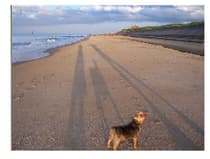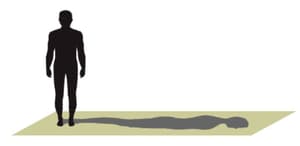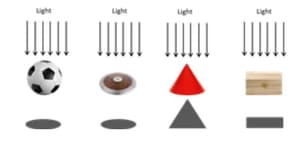Shadows
Shadows: Overview
This topic covers concepts, such as Shadows, Formation of Shadows, and Formation of Shadows Using Opaque Object.
Important Questions on Shadows
The shadow of an object is always _____.
Shadow of an object can looks exactly the same as the object.
Can you make a shadow by using a light source and a plane glass? Explain.
Deepu is of the opinion that solar and lunar eclipses occur because the earth and the moon are opaque. Do you agree with this? Explain.
Transparent objects do not cast shadows.
The picture below shows a dog along with its shadow.
Which of these is the time-of-the-day the above picture represent?
Identify the pictures in which the dark patch on the screen is the shadow of the corresponding object.
Which of these is/are true about images?
Which of these is/are true about shadows?
The size of the shadow of an object depends on which of these factors?
(i) The distance between the object and the light source.
(ii) The distance between the object and the screen.
A torch is placed at four different positions as shown in the figure below.
At which of these positions of the torch will there be a shadow of the ball visible on the screen?
The picture below is the shadow of an object.
Which of the following arrangements can form a similar shadow?
The picture below shows the shadow of a man cast by sunlight.
Which of these is the possible time of the day when such a shadow can form?
Shown below are four objects and their shadows that were drawn by a student. One of the shadows drawn is incorrect.
Identify the object whose shadow was drawn incorrectly.
Which of these objects form a circular shadow when light falls on them from the top?
Which of the following are needed to form a shadow?
Name the property of light illustrated by shadow. (Rectilinear propagation/Refraction)
Shadows of different shapes are formed due to the change of
You are standing in a field on a dark night. Why can you not see your shadow?





